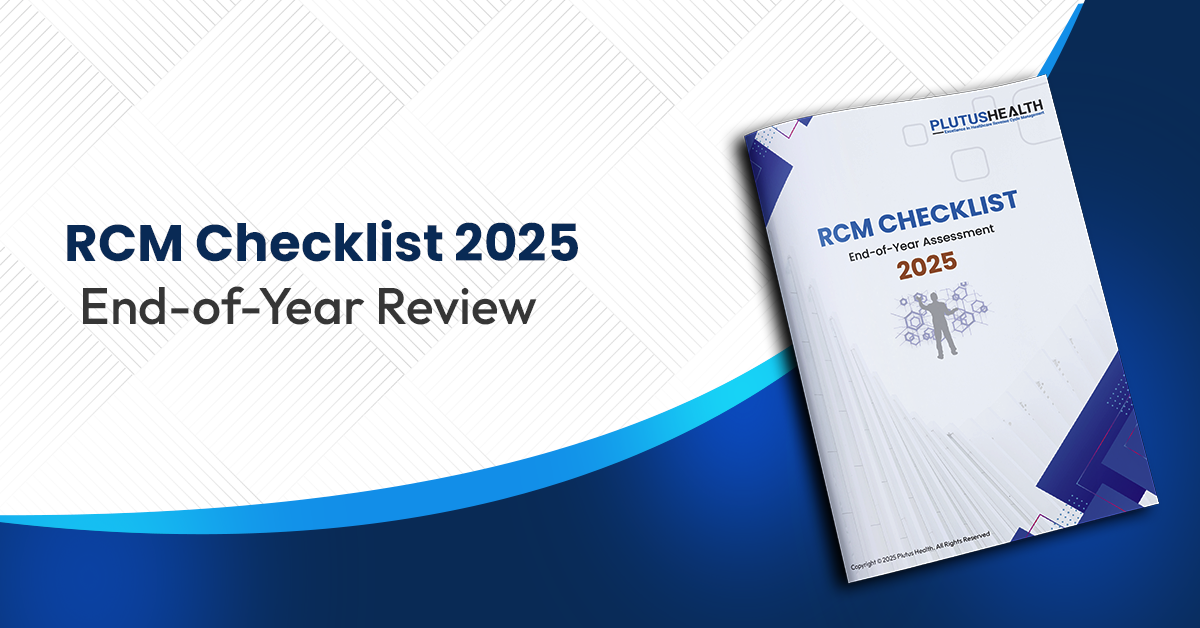How to maintain anesthesia revenue for your ASCs
Recent laws have discouraged revenue sharing between anesthesia providers and physician-owned Ambulatory Surgical Centers (ASC). The Office of the Inspector General cites the federal Anti-Kickback Statute (AKS) behind these laws.
These rules have impacted ASCs’ flow of revenue. However, there are legit ways in which ASCs can receive payments for anesthesia without breaking legal or contract constraints. If you’re looking for ways to maintain your anesthesia revenue, here are a few suggestions.
Understanding the Roadblocks of ASC Anesthesia
When starting an anesthesiology relationship, two laws are crucial to know. The AKS prohibits physicians from intentionally referring a patient for a service that is under federal coverage. The purpose of AKS is to keep money from interfering with what is best for a patient. As such, ensure your patient needs anesthesia and that your services offer a fair market value.
Stark Law is similar to AKS but with a few key differences. This statute only comes up when a physician makes a service referral. The referral has to be a “designated health service,” a term defined by Star Law. This definition includes a wide range of services like prescription drugs. Stark Law will only trigger if the referral entity accepts Medicare or Medicaid and has a financial relationship with the physician.
Because of its strict liability adherence, Stark Law employs regardless of your intentions. Good faith mistakes and malice are both punishable. Simple mistakes may cost you, like failing to provide proper documentation that your services reach a fair market value.
While these laws are excellent at preventing physicians from using patients for money, they have the unfortunate side effect of taking legitimate income from providers. Since Medicare and Medicaid cover some ASCs, they are subject to both these laws.
Qualified Staff Members
To find your best path forward, you need to understand the medical relationship between your ASC and the anesthesiologist. The most critical factor in determining your relationship is how much anesthetic you need.
If you frequently use anesthetics, consider employing an MD staff member who is qualified to administer the drug. These staff members require you to sign a contract and pay them a salary. However, you no longer need to worry about dealing with independent contractors. Larger ASCs looking to increase their profit margins often choose this option.
Even so, if your anesthesiologist is unavailable, you lack a quick backup option for surgeries. Also, during periods when surgeries are rare, your employee will be paid for doing nothing. Factors such as vacation coverage or ASC coding and billing are harder with an in-house worker.
Independent Contractors
If you don’t need a constant anesthesiologist on staff, consider hiring an independent contractor. There are two types of said contracts. A non-exclusive contract means you can hire multiple groups. This diversity gives more choice in terms of medical specialties and schedule flexibility. However, if your ASC handles urgent care, this option can cause problems. These contractors may not be readily available to treat your client.
Exclusive independent contractors lack the variety of heir non-exclusive counterparts. However, you may be able to negotiate a deal that is more consistent than non-exclusives. This reliability means your ASC won’t have to worry about lacking an anesthesiologist in an urgent situation.
Typically, these contracts have no compensation fee. Instead, the anesthesia company will receive all professional fees. This billing structure makes contracts ideal for centers that want to avoid violations of AKS and Stark Law.
New ASC Entity
The highest potential structure for profit is likely an ASC anesthesiologist pairing. This arrangement allows the anesthesia company to collect the money from a procedure and use it to pay professional and anesthesia fees. Any profits left over will go to the ASC. However, this system is the most susceptible to AKS and Stark Law violations. ASCs can get around AKS when they meet specific requirements. Applicants for acceptance will be required to prove why their situation is exceptional.
Outsource Your Billing & Coding
Whatever anesthesiology path you choose, a competent revenue cycle management company can help you maximize profits. With all the laws and regulations surrounding ASC, it’s advantageous to outsource your billing and coding to a company that understands the complexities and maximizes your reimbursements.
Plutus Health has extensive experience with the revenue cycle process and ensures optimal reimbursement for all ASC services. If you are struggling with coding, pre-billing audits and scrubbing, or deep EOB analysis, our expert team takes care to get the fastest reimbursement possible and increase your practice’s performance.
Key Takeaways
1. Understand what laws govern your organization.
2. Hire a permanent staff member if you administer a high number of anesthetics.
3. Use non-exclusive contracts to get access to a wide selection of options.
4. Employ exclusive contractors when you need consistency run by another organization.
5. Create a new anesthesia entity for a high-risk, high-reward venture.
Liked the blog? Share it
FAQs


ABA providers are grappling with high staff turnover (up to 65%), rising burnout, administrative overload, and stagnant reimbursement rates. These challenges directly impact care continuity, clinical outcomes, and operational performance.


Operational inefficiency costs ABA teams up to 10 hours per staff member per week, contributing to burnout, denied claims, and longer accounts receivable (A/R) cycles. These inefficiencies ultimately result in reduced revenue and patient dissatisfaction.


Burnout leads to costly turnover, lower client retention, and decreased productivity. Recruiting and replacing a BCBA or RBT can cost up to $5,000 per hire, plus months of lost revenue and disruption to morale.


High-performing ABA organizations invest in clear career pathways for BCBAs and RBTs, align compensation with market benchmarks, and foster peer-led mentorship, flexible schedules, and wellness programs.


Automation tools like Plutus Health's Zeus streamline eligibility verification, denial management, and billing, reducing manual workloads by 5–10 hours weekly per clinician and improving clean claim rates by 95%.


Outsourcing revenue cycle management can improve collections, reduce denials by up to 30%, and free clinicians from billing-related admin tasks, resulting in better client care and financial outcomes.


One $200 million ABA network partnered with Plutus Health to automate eligibility and accounts receivable (A/R) processes. The result: $2M reduction in legacy A/R and a 97% Net Collection Rate.


By improving operational efficiency, investing in technology, and ensuring workforce stability, ABA leaders can align outcomes with reimbursement. Plutus Health supports this transition with scalable RCM and automation strategies.
FAQs


ABA therapy billing is the process of submitting claims to insurance or Medicaid for Applied Behavior Analysis services provided to individuals with autism or developmental disorders. It includes using correct CPT codes, proper documentation, and adherence to payer-specific policies.


Common CPT codes for ABA therapy in 2025 include:
- 97151 – Assessment and treatment planning
- 97153 – Direct therapy with the patient
- 97155 – Supervision and modification of behavior plan
- 97156 – Family adaptive training
- Always check with payers for any annual changes.


To bill Medicaid for ABA services, providers must ensure credentialing is complete, services are pre-authorized, and claims use the correct codes and modifiers. Medicaid requirements vary by state, so always follow state-specific billing rules.


Common ABA billing mistakes include:
- Incorrect or missing CPT codesplan
- Lack of documentation or treatment
- Uncredentialed providers rendering services
- Submitting duplicate or late claims


Without proper credentialing, providers can’t get reimbursed. Insurance and Medicaid require that BCBAs, RBTs, and organizations are credentialed and contracted. Delays in credentialing often cause revenue losses and claim rejections.
FAQs


CMS proposes a 2.4% increase in Medicare ASC payment rates, contingent on meeting ASCQR quality reporting requirements. Plutus Health helps ASCs meet these compliance benchmarks by integrating quality reporting data into RCM workflows, ensuring eligibility for full payment updates.


The ASC Covered Procedures List will expand by 547 procedures, including cardiology, spine, and vascular surgeries. Plutus Health supports expansion into new service lines by customizing RCM processes for high-acuity procedures, minimizing claim denials during the transition.


Site-neutrality narrows the payment gap with hospital outpatient departments, enhancing ASCs' cost-efficiency appeal. Plutus Health helps leverage this advantage in payer negotiations by providing performance dashboards and cost-justification analytics to secure stronger reimbursement terms.


Complex procedures increase denial risk and slow cash flow. Plutus Health's automation-first RCM model delivers 95%+ clean claim rates, reduces A/R days, and safeguards margins, even as your case mix becomes more complex.
FAQs


A hybrid RCM model combines in-house tasks like scheduling, intake, and patient communication with outsourced billing support for claims, denials, and A/R follow-up. Plutus Health enables this model with automation and expert teams.


Frequent CPT code updates, variable session lengths, high no-show rates, and sensitivity around patient collections make behavioral health billing uniquely challenging. Hybrid RCM helps strike a balance between compliance and patient care.


Tasks requiring patient interaction—like intake, eligibility checks, copay collection, and documentation—are best kept in-house, while backend processes can be outsourced.


Outsourcing denial management, claims scrubbing, and payment posting improves clean claim rates, reduces A/R days, and scales capacity without adding staff.


Plutus Health delivers 97%+ clean claim rates, AI-powered denial prediction, and 48-hour claim turnaround. Our hybrid RCM solutions provide behavioral health CFOs with visibility and control, while enhancing financial performance.
FAQs


Payment complexity, high out-of-pocket costs, increasing denials, and value-based care requirements are pushing providers toward more transparent, tech-supported payment systems.


Patients now act like consumers. They expect clear cost estimates, simple bills, digital payment options, and flexible financing.


AI, automation, and digital tools streamline estimates, reduce denials, support payment plans, and allow faster collections through mobile and online payments.


Complex billing questions, insurance confusion, and financial stress require a compassionate approach. Advocates guide patients and protect trust in clinical care.


Plutus Health supports providers with AI-driven denial prevention, predictive analytics, digital payment tools, patient financing, and a seamless platform, such as AnodynePay.


.png)















































